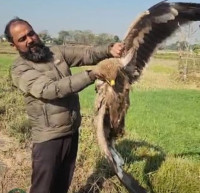National
Poor handling of infections at health facilities concerns experts
Hospital-acquired infections can complicate treatment and even cause deaths, health experts say..jpg&w=900&height=601)
Arjun Poudel
After several other mothers and their babies admitted at the hospital were diagnosed with bacterial infections, the entire hospital had to be shut for several days, and patients transferred to a private hospital.
Following the incident, the Ministry of Health and Population formed a probe team, which pointed the finger at the sanitation workers of the hospital, who did not sterilise equipment used in the operation. The use of sub-standard medicine also helped the spreading of infections, the team noted.
The case at Paropakar was not an isolated one. "Hospital-acquired infections, called “nosocomial infections” in medical terms, are widely prevalent in our system," said Dr Bibek Kumar Lal, director at the Epidemiology and Disease Control Division, the agency responsible for controlling epidemics. This fiscal year, at least three women, who went to a private hospital in Birgunj for delivery, died. Their deaths were attributed to the same cause: hospital-acquired infection.
"The infection-handling process adopted by our hospitals, both government and private, is not satisfactory at all,” said Dr Geeta Shakya, former director of the National Public Health Laboratory under the Department of Health Services. Health facilities, including the state-run ones, discard hazardous waste with the municipal waste without heating them in autoclaves to rid them of infection-causing pathogens.
The Environment Division of the Kathmandu Metropolitan City once in a while penalises private as well as state-run health facilities for discarding medical waste in public places, but that does not stop them from doing so.
A recent study, “Assessment of Immunization Services in Private Sector in Kathmandu Valley”, carried out by a consortium of Atlanta’s Centre for Disease Control and Prevention, Johns Hopkins University, John snow Institute and Health Ministry, shows that health facilities in Kathmandu Valley have been jeopardising the environment as well as public health by defying the rules that prohibit burning, burying and disposing of hazardous immunisation waste with municipal waste.
As a Nepal Airlines plane flew to Wuhan, the capital city of Hubei, on Saturday to evacuate Nepalis living at the epicentre of the coronavirus outbreak, health experts say infection-handling practices in Nepal are not up to the mark.
Though none of the Nepalis returning from China is said to have been infected with the covid-19 virus, which has killed at least 1,523 people and infected over 66,000, all the returnees need to be quarantined at least for 17 days, authorities say. The virus, according to multiple reports, is highly pathogenic and can spread through the air.
"The spreading of infections is not a new thing in our country. We cannot afford even a minor lapse in handling cases of highly contagious viruses like the coronavirus,” said Shakya.
“I hope that the authorities concerned are well aware of the consequences of a minor mistake when it comes to the handling of infection," Shakya said. "This is not only linked with the safety of the patients and health care workers but also that of the larger masses.”
Even doctors don’t trust the hospital’s infection control system, said Dr Lal. That’s why doctors administer a higher than normally required dose of prophylaxis antibiotics to patients before surgeries to prevent infections, said Lal.
"Our existing health care system, which is already problematic, cannot handle a new emergency. Protest by the locals in Bhaktapur just shows the public’s lack of trust in our health care systems,” Lal added.
Referring to Nepal’s preparations to manage evacuees from China, Lal said that Nepalis start digging wells and procuring fire trucks after a fire outbreak. “But as far as the newly-built temporary facilities where the evacuees from China will be kept are concerned,” added Lal, “the government has followed the World Health Organization's infection-handling guidelines.”




 8.12°C Kathmandu
8.12°C Kathmandu















